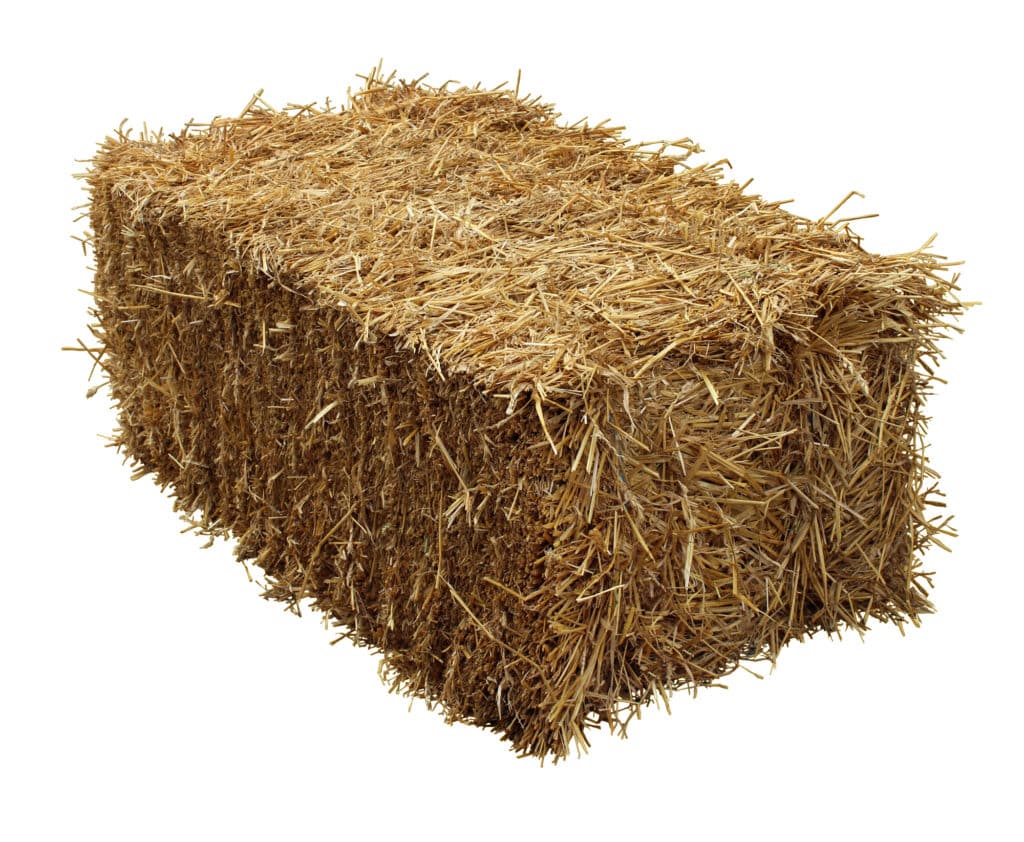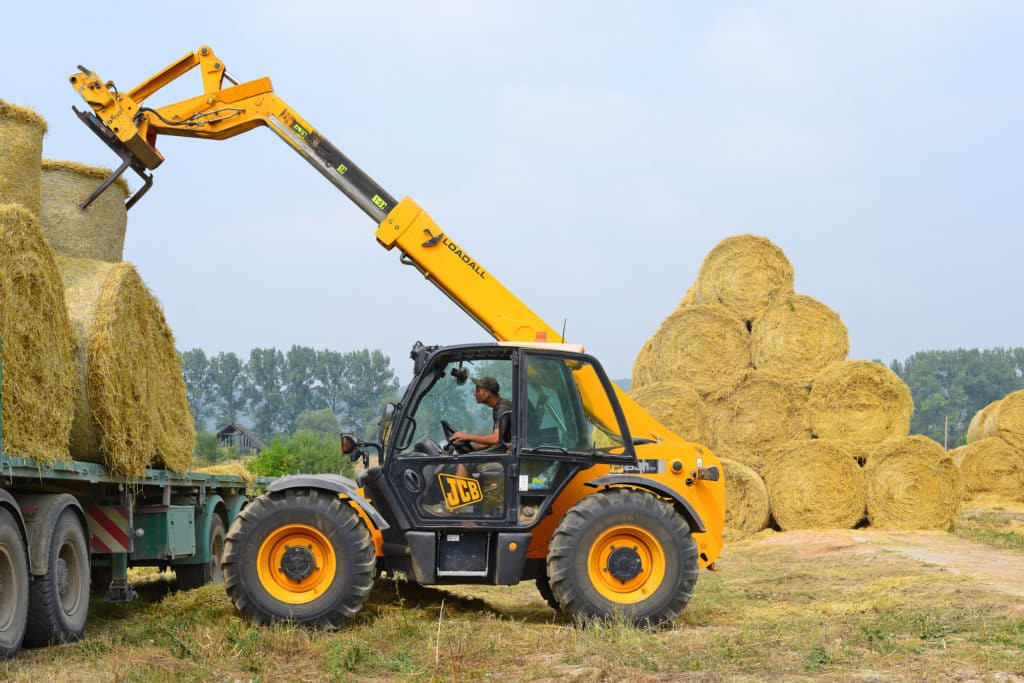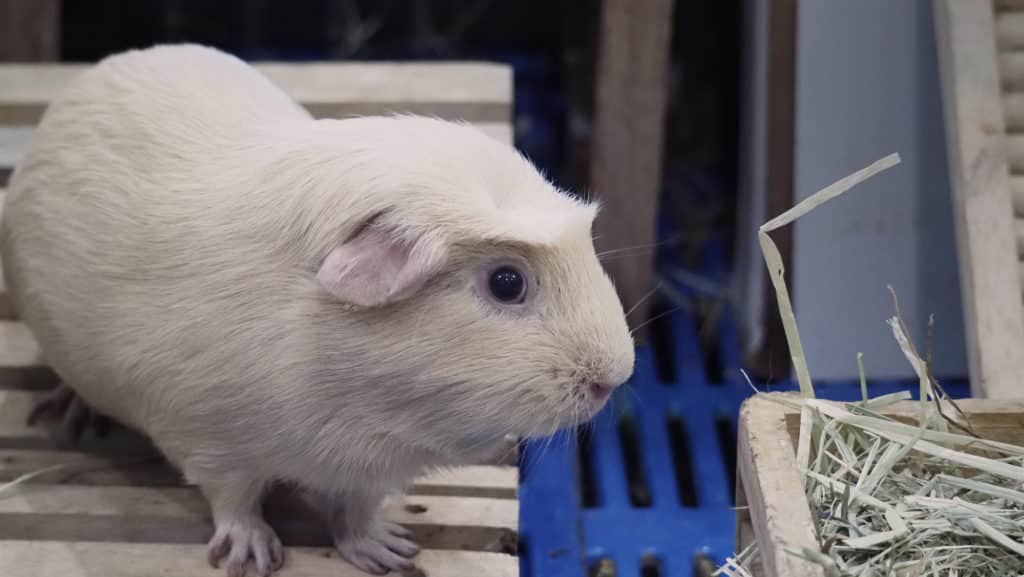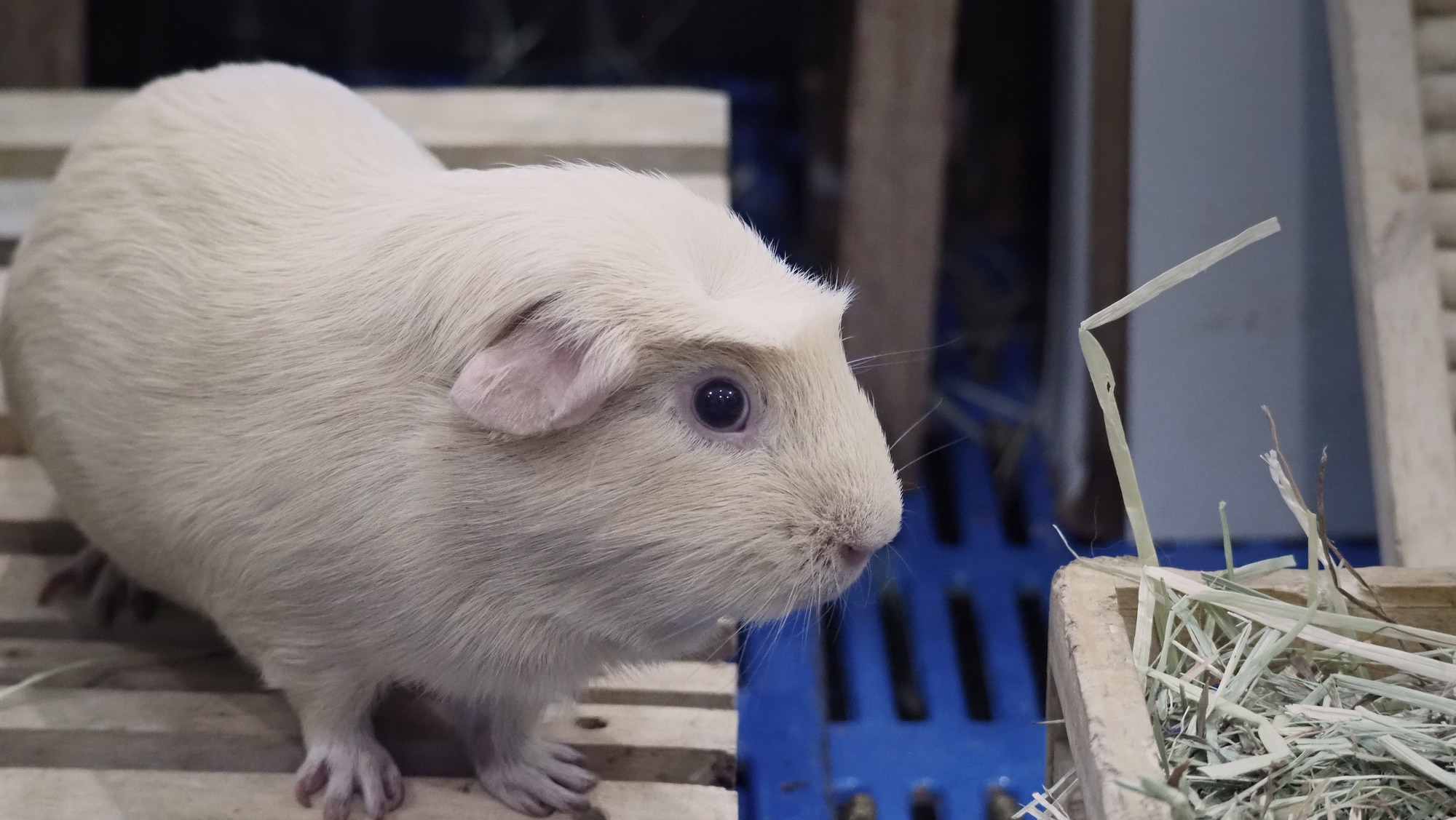Hay is often used as a staple food for livestock like cows and goats, as well as small pets like rabbits and guinea pigs. So, since hamsters are small pets, too, you might have considered giving hay to your hamster. But can hamsters eat hay? Is hay a healthy food item, or is it dangerous for your hamster? Which type of hay is the best? Read this blog post to find out.
Why should or shouldn’t hamsters eat hay?
Health benefits
1. Hay is a rich source of fiber. Fiber makes the bowels softer, making their movement smoother. Thus, hay can prevent constipation and improve the health of the digestive tract.
2. Since hay contains fiber that makes bowel movement smoother, it removes food items that have a slower metabolism rate, clog the digestive system, and/or cause weight gain. Thus, hay helps your hamster maintain a healthy weight and keeps him from getting obese.
3. The teeth of rodents, like hamsters, keep growing till they die. So, it is vital for them to wear their teeth down constantly. If not, the teeth can overgrow and prevent them from eating properly, causing malnutrition. They could also grow into hamsters’ nasal cavities and injure them. But hay can prevent these problems from happening because it wears the teeth of hamsters down.
4. Hay can provide mental stimulation for your hamster by encouraging his natural foraging behavior. Placing it in multiple locations in your hamster’s cage can enhance his foraging behavior even further, thereby maximizing mental enrichment (Source: Oxbow Animal Health).
Risks
1. Hay and dust go hand in hand. If dust gets into a hamster’s nostrils, it could cause breathing problems. So, either air the hay out or beat it until the dust gets out before giving it to your hamster.
2. Hay is not dangerous for hamsters normally. But if there are any pieces of hay with pointed edges, they might injure the eyes, nose, and other body parts of your hamster, especially if he decides to use it as bedding material. So, remove all pieces of hay with sharp, pointed edges before giving hay to your hamster.
3. Hay might have several health benefits. But it lacks many nutrients that hamsters need. Indeed, unlike rabbits and guinea pigs, hamsters do not need hay in their diet. Even without hay, they can get all the vital nutrients they need from commercially available hamster pellets and fresh fruits and vegetables. So, hay is not an absolutely necessary food item for a hamster. So, if you decide to give hay to your hamster, do not give too much at one time because if he likes the taste of hay and overeats it, he wouldn’t have any place left in his stomach for other food items. This could lead to malnutrition and other problems. So, give only a few pieces of hay to your hamster at a time.
4. Hay can cause itchiness as well.
5. If the piece of hay is too long, it can cause your hamster to choke on it.
Can hamsters eat hay?
Yes, hamsters can eat hay. But as said before, hay provides some nutritional benefits for hamsters. However, it is not absolutely necessary for them to stay healthy.

But you can give your hamster hay and see what he does. Some hamsters might like the taste and eat it, while some may not like the taste but still chew on it to wear their teeth down. Some might decide to use it as bedding, whereas some hamsters may not give a second look after trying hay the first time. Each hamster has a different personality. So, you have to test it out to find out if your hamster will like hay.
Different types of hay
1. Alfalfa hay
Alfalfa hay is one of the best types of hay to give your hamster. It is not only tasty but also rich in fiber, protein, calcium, and several vitamins (Source: Feedipedia). The protein and calcium content in Alfalfa hay is higher than most other types of hay. But since it contains a high amount of calcium, you should only give a few pieces of it at a time because too much calcium can lead to kidney stones, weaken the bones, and affect how the heart and brain work.
2. Meadow hay
Meadow hay is a mixture of grasses, leaves, flowers, clovers, and seed heads of edible plants like daisies, dandelions, etc. (Source: Tiny Pet Tales). It is softer and less dusty than many other types of hay.
The process of drying reduces the quantity of nutrients, especially vitamins, in hay. Indeed, the degree of greenness is a reliable indication of the vitamin content in hay (Source: Paulin Grain). So, if you plan to give meadow hay to your hamster, you should go for long green strands which appear fresh since they are likely to be more nutritious.
3. Orchard hay
Orchard hay is great for your hamster because it contains all the essential nutrients – fiber, protein, and fat – in the right mix. So, it’s healthy for hamsters. It has broader leaves. So, it is also easy for your hamster to chew.
4. Timothy hay
Timothy hay is the most commonly available hay. It is tasty and smells good. So, many hamsters like Timothy hay. But you should be careful while choosing the right Timothy hay for your hamster. Fresh and green Timothy hay that has a pleasant aroma is the best choice. Avoid dry ones since their nutritional content may not be as high as the fresh ones. Avoid molding hay since it can make your hamster sick. Also, avoid thick Timothy hay since it will be difficult for tiny creatures like hamsters to digest.
Of the above-mentioned varieties of hay, Alfalfa and Timothy hay are more famous among hamster owners because hamsters prefer them for their taste.
How to give hay to your hamster?
Hay is not dangerous for hamsters. So, you don’t have to worry about giving too much to them. But you have to make sure that there are no pointed edges in the hay you give them since they can injure your hamster. Also, make sure that the hay is not too long so as to prevent your hamster from choking on it.
Once you have selected the right pieces of hay for your hamster, you can just leave them somewhere in your hamster’s enclosure so that he can pick them up whenever he wants. You can also try mixing it with other treats he likes.
Can hamsters use hay as bedding?
If you give hay to your hamster, sometimes he might decide to use it as bedding. In the wild, hamsters bring all sorts of soft stuff, from twigs to dried leaves, back to their hideout to use as bedding. It is normal behavior for several animals. So, you don’t need to freak out if your hamster doesn’t eat the hay you provide and decides to use it as bedding instead. Indeed, putting hay as a bedding supplement will strengthen his instincts by encouraging him to forage.
Hay is a safe bedding supplement for hamsters as long as you remove the sharp edges and dust it out. Also, make sure that you get the hay from a pet store and not from a farm because you can never know what type of chemicals might have been used on the farm.
While it is fine to use hay as a bedding supplement or give a few pieces of hay to your hamster, it is not safe to use hay as the actual bedding material due to the following reasons:
1. Hay is a bad absorbent. So, it will not absorb your hamster’s pee as effectively as other types of bedding. Hence, it will remain wet most of the time. Soon it can become smelly, and the smell of ammonia in the urine will spread throughout the room. And since hamsters have a stronger sense of smell when compared with humans, this strong smell will disturb them a lot.
2. Wet bedding also poses several health hazards for hamsters since it can cause skin diseases, bumblefoot, etc.
3. Hay is a material that is sensitive to weather and moisture. It can quickly get moldy if it becomes wet. And mold can cause a lot of problems for hamsters. They can cause a string of diseases, and if they inhale the mold, they can get sick very quickly.
4. For long-haired hamsters, hay can be a big problem because it can stick to their fur and cause a lot of irritation and inconvenience.
5. The pointed edges and the dust in hay can hurt and/or make your hamster sick if he decides to burrow through the hay bedding.
Due to all of the above-mentioned reasons, it is not recommended to use hay as the primary hamster bedding material. But it is not a problem if your hamster decides to collect the hay and create a nest in his hideout with it since hamsters normally urinate in the same corner of their cage every time because their urine is smelly and they cannot normally bear its stench. So, a small collection of hay in their hideout shouldn’t be dangerous. Therefore, even though your hamster’s bedding shouldn’t primarily consist of hay, giving a few pieces of hay shouldn’t be a problem. If you think your hamster is collecting a lot of hay, you can remove it and provide him new pieces of hay.
FAQ
Can hamsters chew on hay?
Yes, hamsters can chew on hay. It is not dangerous for them. On the contrary, it helps them wear down their ever-growing teeth.
Can hamsters have hay as bedding?
No, hamsters shouldn’t have hay as the only bedding material due to all of the reasons mentioned in a previous section (Can hamsters use hay as bedding?) of this blog post. But if they gather the few pieces of hay you provide them and form a nest in their hideout, it shouldn’t be dangerous.
Do hamsters need hay or straw?
Unlike many other small animals like rabbits and guinea pigs, hamsters do not need hay or straw to be healthy. A balanced diet, consisting of commercially available hamster pellets and occasional treats of fresh vegetables and fruits, should be enough to meet the nutritional demands of their bodies.
How much hay should you give your hamster?
Hay is not dangerous for hamsters. So, you can leave a small amount of hay near your hamster’s hideout every day. It encourages their foraging behavior as well.
Fun facts
What is hay?
Hay is a term used to refer to plants that are cut, dried, and stored to be used as animal fodder. It can be used as fodder when there isn’t enough pasture for animals to graze, when the weather (E.g., winter) makes grazing impossible, or when animals are kept in places like a barn or stable and are unable to access pasture.
Hay can be used as fodder for large animals like horses, cattle, and sheep, as well as small animals like rabbits and guinea pigs. Some of the commonly used plants to make hay are a mixture of grasses like ryegrass, bermudagrass, orchard grass, fescue, timothy, and brome, and legumes like alfalfa and clovers (Source: Wikipedia).
Sometimes, plants like oat, wheat, and barley are cut when they are green and made into straw, which is the result after the grain is harvested and threshed. So, it contains mostly a mixture of stems and dead leaves. Hence, straw doesn’t have as much nutritional value as hay, even though it is a rich source of dietary fiber.
Making hay is not such an easy task. Hay is highly sensitive to weather conditions. For example, in cases of drought, both leaf and seed production may be reduced, resulting in hay consisting mostly of dry stems that offer low nutritional value. On the other hand, if the weather is too wet, the cut plants can spoil before they can be beaten, dried, and made into hay. So, weather is very important when hay is harvested. “Make hay while the sun shines” is an apt proverb, after all.

Not just during harvest but also during storage, hay needs the right conditions. If the storage area is wet or the hay itself is wet due to the weather conditions at harvest, hay can rot and even develop mold, resulting in the formation of toxins that can make the animals that feed them sick.
Origin
Even though it is not so obvious, hay has been an important commodity for human civilization for a very long time.
As long as humans remained nomadic, they spent their lives following their herds or flocks to places with good grazing possibilities. If they lived in the mountains, they might have moved along with their animals to high meadows during the summer and downhill to closer pastures during the winter. In warmer climates, they might have let their animals loose throughout the year to graze anywhere they want. In colder lands, however, they might have cut leafy branches from trees and dried them to be used in the winter.
But once the civilization turned agrarian, the significance of livestock – especially horses and oxen – increased considerably, and dried fodder like hay became a powerful and essential commodity. It was the primary fuel of the pre-automative times. Without it, armies wouldn’t have been able to move any faster than the rate at which men could march. All land-based transportation would have been limited to only regions where grazing was possible. And in winter, everything would have stopped. Moreover, hay was also essential for large-scale agriculture. Livestock couldn’t have survived the cold winters in many countries without hay.
So, the process of making hay should have been invented very early (Source: Equus Magazine). But the exact time in history when it was invented is not clear. Some people argue that it could be during the roman times around the time of Christ’s birth. There are also records of silage (Hay is dried, while silage is stored without drying in air-tight conditions) being used around 700 BC (Source: Stack Exchange).
But regardless of when hay was invented, by the middle ages, it had become a staple crop in the European communities that relied on horse and oxen power. Even though hay was very important for these communities, mowing it was not easy. For a long time, the sickle was used to mow hay, which took a lot of manpower. By the middle ages, however, another great invention – The Scythe – had become famous and saved a lot of time and effort in mowing hay. But despite the use of the scythe, mowing still needed a lot of intensive manpower.
At the beginning of the 19th century, mechanical mowers were invented and made mowing easy. In the mid-19th century, presses were invented that could press hay into bales of varying sizes and shapes, which made storage and transportation of hay easier. By the end of the 19th century, the transition from horse-powered to gas-powered machinery started, and finally, haymaking had come of age.
Conclusion
Hay is healthy for hamsters because they are a rich source of dietary fiber. But hamsters do not need hay to be healthy. They can live happily and healthily without seeing a trace of hay in their entire lifetime. That being said, hay is not dangerous as such. It can help wear down the teeth of your hamster, promote gastrointestinal health, and can encourage natural foraging behavior. So, you can leave a small amount of hay outside your hamster’s nest every day.



